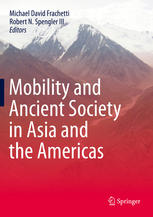

Most ebook files are in PDF format, so you can easily read them using various software such as Foxit Reader or directly on the Google Chrome browser.
Some ebook files are released by publishers in other formats such as .awz, .mobi, .epub, .fb2, etc. You may need to install specific software to read these formats on mobile/PC, such as Calibre.
Please read the tutorial at this link: https://ebookbell.com/faq
We offer FREE conversion to the popular formats you request; however, this may take some time. Therefore, right after payment, please email us, and we will try to provide the service as quickly as possible.
For some exceptional file formats or broken links (if any), please refrain from opening any disputes. Instead, email us first, and we will try to assist within a maximum of 6 hours.
EbookBell Team

0.0
0 reviewsMobility and Ancient Society in Asia and the Americas contains contributions by leading international scholars concerning the character, timing, and geography of regional migrations that led to the dispersal of human societies from Inner and northeast Asia to the New World in the Upper Pleistocene (ca. 20,000-15,000 years ago). This volume bridges scholarly traditions from Europe, Central Asia, and North and South America, bringing different perspectives into a common view. The book presents an international overview of an ongoing discussion that is relevant to the ancient history of both Eurasia and the Americas. The content of the chapters provides both geographic and conceptual coverage of main currents in contemporary scholarly research, including case studies from Inner Asia (Kazakhstan), southwest Siberia, northeast Siberia, and North and South America. The chapters consider the trajectories, ecology, and social dynamics of ancient mobility, communication, and adaptation in both Eurasia and the Americas, using diverse methodologies of data recovery ranging from archaeology, historical linguistics, ancient DNA, human osteology, and palaeoenvironmental reconstruction. Although methodologically diverse, the chapters are each broadly synthetic in nature and present current scholarly views of when, and in which ways, societies from northeast Asia ultimately spread eastward (and southward) into North and South America, and how we might reconstruct the cultures and adaptations related to Paleolithic groups. Ultimately, this book provides a unique synthetic perspective that bridges Asia and the Americas and brings the ancient evidence from both sides of the Bering Strait into common focus.